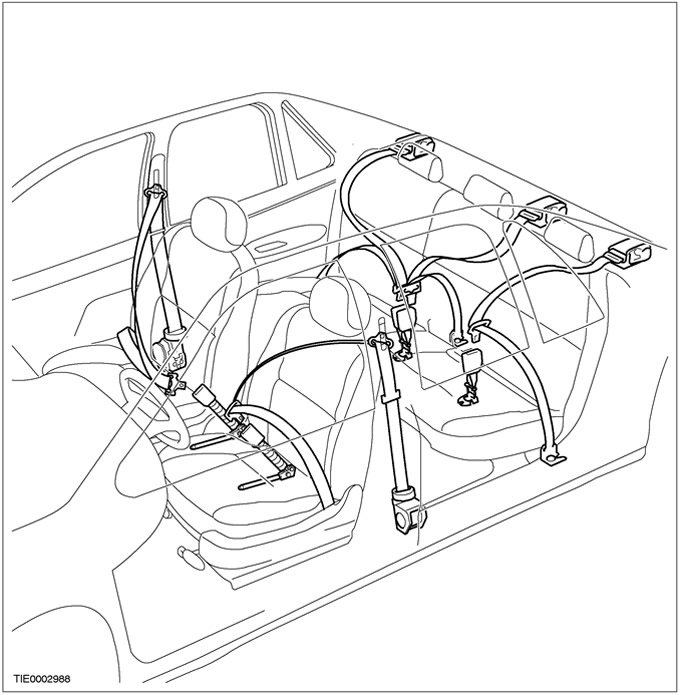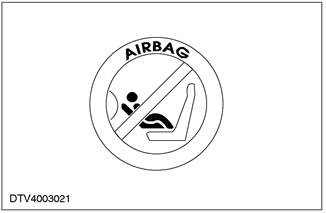4-door variant shown

WARNING: After any collision, inspect all components of the seat belt system, including retractors, buckles, front seat belt buckle attachment points (sliding bars) (in the presence of), child safety seat support brackets (in the presence of) and fasteners. Unless a qualified mechanic can confirm that there is no damage and that it functions correctly, new seat belt assemblies should be installed. New seat belt assemblies should also be installed if seat belt assemblies that were not in use at the time of the collision are found to be damaged or malfunctioning upon inspection. Failure to follow these instructions may result in personal injury.

WARNING: All vehicles fitted with an optional passenger airbag at the factory have a WARNING label affixed to the instrument panel PROHIBITED use of rear-facing child seats. Failure to follow these instructions may result in personal injury.
The Focus is equipped with two front and three rear retractable lap and diagonal three-point seat belts.
The center rear seat belt retractor is mounted on the rear luggage rack on 4-door versions; 3-door, 5-door variants and variants "station wagon" are equipped with a center rear seat belt integrated into the rear seatback.
Operating principles
The seat belt system fitted to the Focus uses a traditional hip and diagonal 3-point anchorage for all seating positions, including the center rear seat.
The front seat belts are fitted with a pyrotechnic retractor that is attached to the frame of each front seat. The pyrotechnic seat belt pretensioner is controlled by the auxiliary restraint system. See Section 501-20A / 501-20B for more information. The rear seat belt buckles are mounted directly on the floor panel, under the rear seat cushion. The seat belt buckle attached to the driver's seat is equipped with a switch (depending on configuration), connected by means of a wiring harness to a control lamp on the instrument panel and a buzzer (depending on configuration), built into the central timer module. When the ignition is switched on for the first time, the warning lamp and the buzzer will only come on if the seat belt is not fastened. If the seat belt is fastened before the ignition is switched on, the circuit is broken and the warning lamp remains off.
Seat belt retractor mounted at the base of the rack "IN", includes a torsion load limiting device. This device includes a pull-in coil mounted on a shaft (torsion), which, immediately after blocking the retracting coil by the sensor and applying a given load, turns and draws an additional piece of tape into the system. The braking force required to initialize this sequence is approximately equal to the force required to initialize airbag deployment. The torsion load limiting device is only activated if the seat belt is fastened at the time of the collision.
Vehicles not equipped with driver and passenger airbags do not use this type of retractor. Such vehicles are equipped with traditional retraction mechanisms. Please note that in any situation in which either of the seat belts is fully engaged, the seat belt webbing may stretch and visible discoloration may occur in the D-loop area. For this reason, in the event of a car accident in which the airbag deployed (ek) safety, it is forbidden to use all seat belts that were fastened at the time of the accident. New seat belts required.
Retraction mechanism with emergency lock (ELR)
All seat retractors have ELR function. At the moment of any sudden deceleration, or under the torsional force of a high speed turn, the weight inside the seat belt retractor places a locking pawl against a tooth on the retractor gear wheel, which locks the retractor, preventing any further retraction of the belt. Once the force acting on the retractor through the seatbelt band is no longer applied, the locking pawl will unlock the retractor spool and normal retractor movement will resume.
Visitor comments